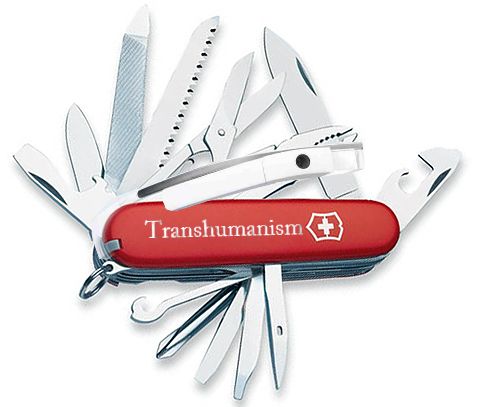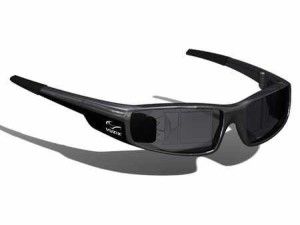Transhumanism is all about the creative and ethical use of technology to better the human condition. Futurists, when discussing topics related to transhumanism, tend to look at nano-tech, bio-mechanical augmentation and related technology that, for the most part, is beyond the comprehension of lay-people.
If Transhumanism as a movement is to succeed, we have to explain it’s goals and benefits to humanity by addressing the common-man. After all, transhumanism is not the exclusive domain, nor restricted to the literati, academia or the rich. The more the common man realizes that (s)he is indeed already transhuman in a way — the lesser the taboo associated with the movement and the faster the law of accelerating returns will kick in, leading to eventual Tech Singularity.
Augmented Reality Visors: Enabling Transhumanism.
At the moment, Google Glass is not exactly within reach of the common man, even if he want’s to pay for it. It is “invite only”, which may be counter productive to furthering the Transhumanism cause. Now, to be fair, it may be because the device is still in beta testing, and once any bugs have been ironed out, the general public will benefit from both, a price drop and accessibility, because if Google does not do it, China will.
Google Glass: A Transhumanist’s Swiss Knife
Glass is the very definition of an augmented human, at least until the time hi-tech replaceable eye-balls, or non-obtrusive human augmentation technology becomes common-place. Glass is a good attempt at a wearable computing device that is practical. While it does lend a cyborg look to it’s wearer, future iterations will no doubt, bring the “Matrix” look back into vogue.
Above: Companies such as Vuzix, already have advanced AR capable visors that are aesthetically pleasing to look at and wear. So how is Google Glass (and similar AR visors) the Swiss Army Knife of Transhumanists?
Augmented Human Memory:
Wearing glass, allows a Transhuman to offload his/her memory to glass storage. Everyday examples follow…
- Park your car in a multi-story parking lot, step back a few steps and blink your eyes once. Instant photographic memory of the location via Glass’s wink activated snapshot feature.
- Visited a place once and don’t remember? Call on your “expanded” memory to playback a video recording of the path taken, or display a GPS powered visual overlay in your field of view.
Previously, this was done via a cellphone. In both cases, one is already Transhuman. This is what the common man needs to be made aware of and there will be less of a stigma attached to: The World’s most dangerous idea.
Life Saver — “Glass Angel”
Every one is said to have a “Guardian Angel” watching over them, yet an app named “Glass Angel” would be an apt name for a collection of potentially life saving modules that could run on Google Glass.
- CPR Assist: How many people can honestly say they know CPR? or even the Heimlich maneuver? Crucial moments can be saved when access to such knowledge is available… while freeing up our hands to assist the person in distress. In future iterations of Google glass (glass v2.0?) if true augmented reality capability is provided, a CGI human skeleton can be overlaid on the live patient, giving visual cues to further assist in such kinds of situations.
- Driver Safety: There are some states in the US looking at banning the use of Google Glass while driving. Yet, it is interesting to note that Glass could be that Guardian Angel watching over a driver who might nod off at the wheel after a long day at work. (DUI is not an excuse however to use Glass). The various sensors can monitor for tilt of head and sound an alarm, or even recognize unusual behavior of the wearer by analyzing and tracking the live video feed coming in through the camera…sounding an alarm to warn the wearer.
Augmented Intelligence — or — Amplified Intelligence:
How many times a day do we rely on auto-spell or Google’s auto correct to pop up and say “Did you mean” to warn us of spelling errors or even context errors? How many times have we blindly trusted Google to go ahead and auto-correct for us? While it can be argued that dependence on technology is actually dulling our brains, it is an un-arguable fact that over the coming years, grammar, multi-lingual communication, and more advanced forms of intelligence augmentation will make technology such as Google Glass and it’s successors, indispensable.
Possibly, the Singularity is not all that far away… If the Singularity is the point when Technology overtakes human intelligence… I see it as the point when human intelligence regresses to meet technology, mid-way.
On a more serious note: Should we be alarmed at our increasing dependence on Augmented Intelligence? or should we think of it as simply a storage and retrieval system.
If a lecturer on-stage, addressing a gathering of intellectuals, uses his eyeballs to scroll up a list of synonyms in real time on his Google glass display, to use a more succinct word or phrase when making a point, does that make him sound more intelligent?… how about if he punctuates the point by calling up the german translation of the phrase?
These are questions that I leave open to you…
Digital Bread Crumbs- Quantum Archeology and Immortality.
Every time we share a photo, a thought… an emotion as a status update: we are converting a biological function into a digital one. We are digitizing our analog stream-of-consciousness.
These Digital Breadcrumbs that we leave behind, will be mined by “deep learning” algorithms, feeding necessary data that will drive Quantum Archeology processes… that may one day soon, resurrect us — Digital Resurrection. This might sound like a Transhumanist’s Hansel and Gretel fairy-tale… but not for long.
How does Google Glass fit in? It’s the device that will accelerate the creation of Digital Bread-crumbs. I’d saved this most radical idea for last: Digital Resurrection.
Glass is already generating these BreadCrumbs — transhumanizing the first round of beta testers wearing the device.
The next version of Google Glass, if it features true see-through Augmented Reality support, or indeed a visor from a Google competitor, will allow us to see and interact with these Digital Surrogates of immortal beings. It’s described with plausible hard science to back it up, in Chapter 6 of Memories with Maya — The Dirrogate.
I’d like to end this essay by opening it up to wiki like input from you. What ideas can you come up with to make Google Glass a swiss army knife for Transhumanists?
(This article was originally posted on the Science behind the story section on Dirrogate.com)



What if on of my family members is ever in an emergency situation and they call 911 with their cell phones, i would like for google glass to sound an alarm or inform me immediately of their location and perhaps a direct call to them and if i request it the fastest route to reach them.
A nice use of glass cesar. While of course cell-phones can do this today, Glass gets us one step closer to intuitiveness and timely communication because of the way it’s worn (akin to a pair of spectacles).
On another thought, people in an unfamiliar environment can don a pair and as they walk around an apartment, glass “recognizes” unique visual features around the room and pops up relevant info in context.
(older people unfamiliar with features of high tech equipment for instance)
This of course can work for different scenarios (operational / emergency procedures for personnel in a factory etc..)
Mechanical learning and feedback. I want Glass to follow the tempo and glow of the notes on printed music as I learn the cello. Then I know the expectation of the piece and a new standard will emerge — nuance and variation. So not only will it show where I am, but where I should be. That makes practice much more efficient and music faster to acquire.
Good use of glass, Daryl. I can also see musicians in an orchestra knowing where they “will be” as glass cues upcoming sheet music within their field of view.
Also as a universal telepromter — giving more confidence to speakers to engage with their audiences and not falter in a talk.
Or pulling up a list of synonyms by recognizing a word uttered, when the speaker is trying to emphasize a point.
Truly augmenting a speaker’s intelligence and personality in one go.